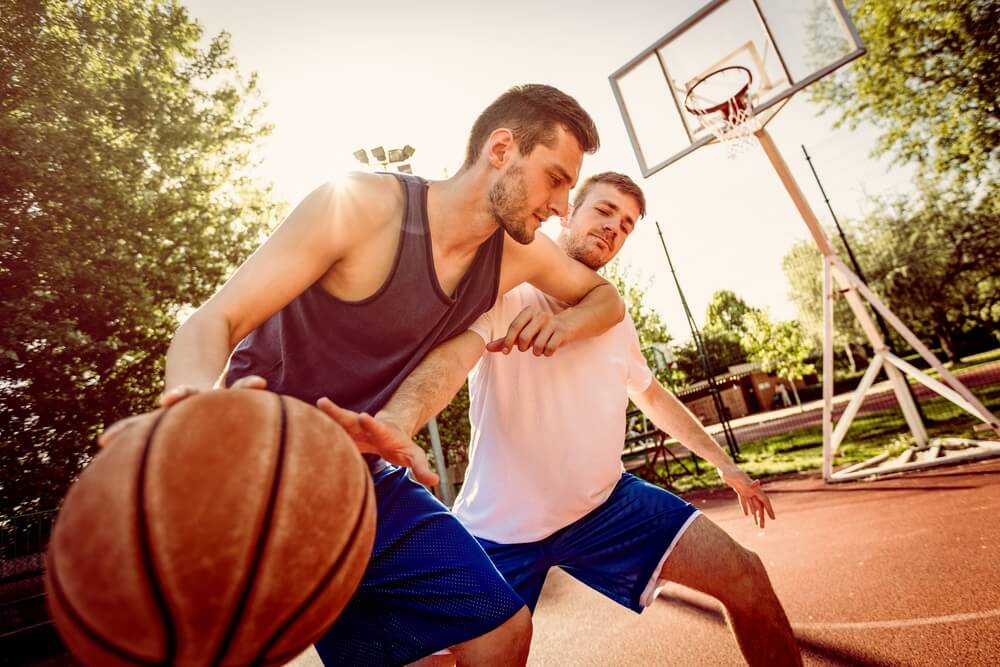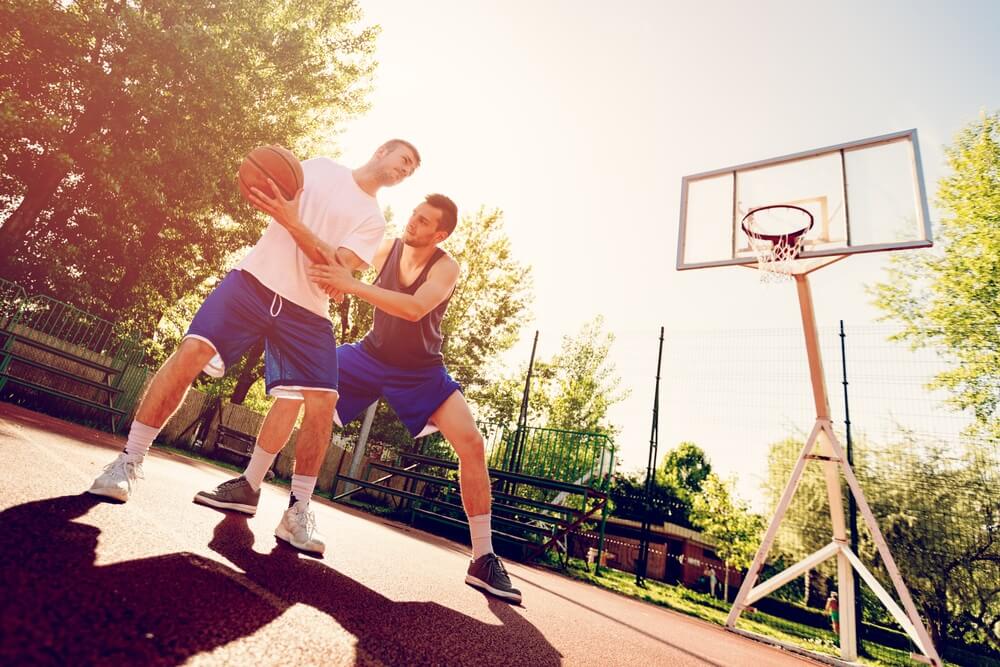
Like any other sport, rules and regulations ensure the game is fair for all players in basketball. Hand-checking is a frequent foul often made in pick-up matches, college games, and even the NBA.
Hand-checking wasn’t always illegal in this sport. Still, for many good reasons, it eventually evolved into a foul, ensuring players weren’t using their arms to control the opposing player holding the ball.
Understanding hand-checking, how it was interpreted in the past, and how it is interpreted today can ensure fewer fouls in future games.
Contents
- What Is Hand Checking in Basketball?
- Hand Checking Wasn’t Always Deemed Unfair
- How Michael Jordan Changed the Rules
- What Is the Penalty for Hand Checking in Basketball?
- The Exceptions
- Relaxed Referees
- How to Avoid Hand Checking in Basketball
- Summing Things Up
- FAQs
- What is a hand check in basketball?
- Are hand checks legal in the NBA?
- Have hand checks always led to fouls?
What Is Hand Checking in Basketball?

What is hand checking? You probably already know this move but don’t even know it yet. Many players, especially those new to the game, will do this without realizing it.
This personal foul occurs when a defensive player places their hand (one or both) against the offensive player to control their progress or stop it altogether. This type of contact is not allowed whether the arm is slightly or fully extended.
Hand Checking Wasn’t Always Deemed Unfair
The NBA didn’t always see hand-checking as a foul. It was a big part of the game for a long time.
Back then, the league utilized this move, giving the “big men,” those standing seven feet tall or more, a painstaking advantage. This move allowed dominant defenders to stop the player from easily driving the ball in their tracks.
Hand-checking at this time gave the center much more powerful gameplay and would deter the perimeter players from driving the ball.
Even if these players made it past their defenders, they would come face-to-face with a large center guarding the rim. Anyone who made it this far would get hit, and it wasn’t a light tap.
Although watching these matches could be entertaining, depending on the teams and players, it wasn’t all that competitive.
How Michael Jordan Changed the Rules
In the 1980s and 90s, a massive number of dominating centers took control of the court. However, numerous perimeter stars, like Reggie Miller, Magic Johnson, and Larry Bird, were also starting to make waves. But it is Michael Jordan who made the most significant difference, ending hand-checking for good.
Once Jordan retired from the sport, the league needed to find a way to encourage more perimeters to push forward. Plus, young athletes joining the game looked up to Mike and wanted to play like him, honing in on perimeter skills.
It was in the NBA’s 2003/2004 season (after Jordan’s 2nd and final retirement) that hand-checking was banned by a new rule change in the official NBA rule book for good.
What Is the Penalty for Hand Checking in Basketball?

Just because hand-checking is now banned doesn’t mean it never happens during games. The difference today compared to the past is that it is now considered a foul.
A hand-checking foul will result in the opposing defender receiving a single personal foul and the ball going dead. After that, an inbound pass is awarded to the offense. But that isn’t the end. The player responsible for the foul is also assessed a fine.
Hand-checking can get a player and the entire team into a lot of trouble, especially if they are called on it frequently. In the NBA, only six personal fouls are permitted, with anything after that disqualifying the player.
If the ref catches a hand-check while a player is attempting a shot, a personal foul is called and will award the offensive player two free throws.
While this act is often a personal foul if committed on the defensive end, hand-checking can be seen as a team foul.
The Exceptions
Although basketball is now known as a relatively contact-free sport, not all contact is illegal. A defender can touch the opposing player momentarily on the court, if and only if this action does not in any way affect the player’s movements, such as:
- Rhythm
- Speed
- Quickness
- Balance
This helps to keep the basketball game moving, not calling a foul every time contact is made.
Relaxed Referees
More often than not, refs will not call hand-checking for first-time offenders. This call is usually made when a defensive player frequently makes unlawful contact throughout a game.
Refs will also rarely call hand-checking at the top of the key since this is the location defenders are matched up against the ball handler.
Another scenario where hand checking won’t be called is in the low post area. This spot is extremely close to the hoop above or underneath the low block (or the rectangles on the court).
How to Avoid Hand Checking in Basketball
It is nearly impossible to eliminate all touches during a basketball game, especially when the main goal is to gain control of the ball, even when it is the possession of the opposing team. However, you can avoid fouls and penalties with practice.
A few areas to work on include:
- Hand-eye coordination– You can play catch, bounce the ball off a wall, or jump rope.
- Dribbling the ball- Some drills that work well in this area include cone touch drills, figure eight drills, and full-court dribbling.
- Balance-Yoga and resistance exercises are a great way to improve your balance. Good balance will ensure your hands and arms only go where you want them to.
One of the best ways to avoid hand-checking is by staying mindful of your actions and the rules. Reminding yourself frequently that this can lead to damaging penalties will ensure you try to avoid doing it at all.
Summing Things Up
Although hand-checking was once seen as a power move in basketball many years ago, today, it is a foul that can result in severe consequences. Educating yourself on hand-checking and implementing ways to avoid it during every game will ensure the opposing team isn’t handed an easy win.
FAQs
What is a hand check in basketball?
In basketball, a hand check is when a player places his hands or arms on the opposing player, impeding the ball’s movement.
Are hand checks legal in the NBA?
Handchecks are illegal in the NBA. Not only can you get a foul for this action, you can also be ejected from the game.
Have hand checks always led to fouls?
Hand checks were initially allowed in the game. It wasn’t until the early 2000s that the NBA finally deemed it a foul and penalized players for doing it.